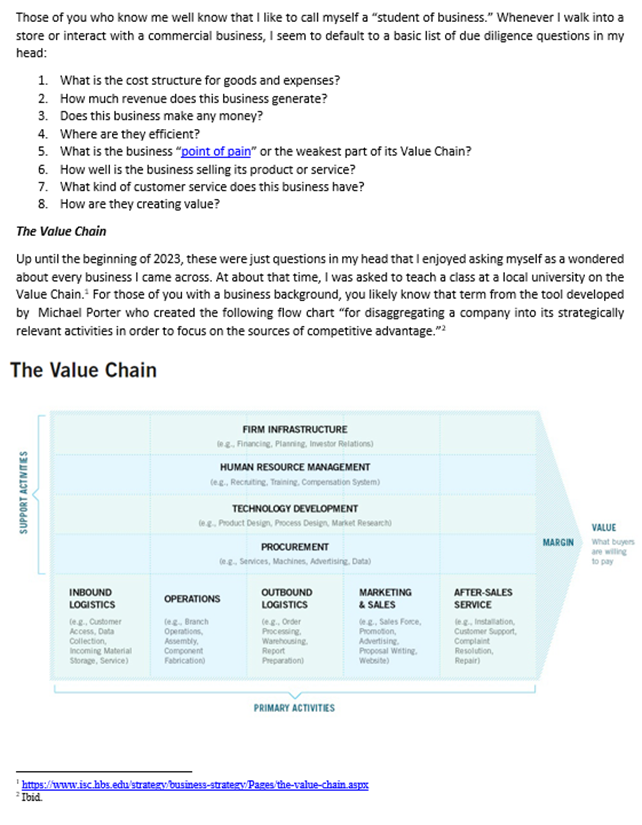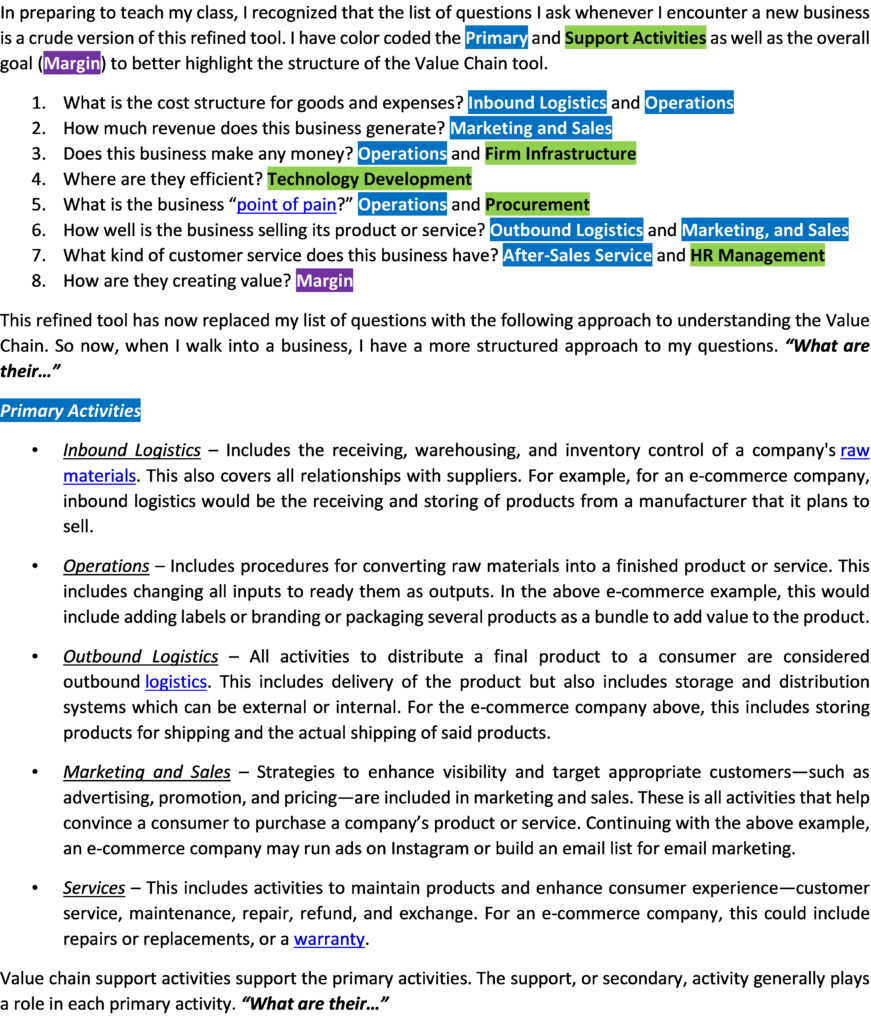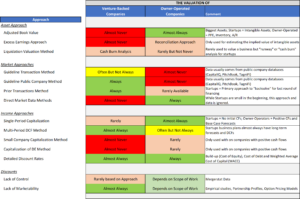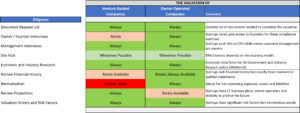Are You an Expert at What You Do?
So what is an expert and, more importantly, are you one? The term “expert” has many definitions. For anyone who has written a wedding toast or sat through a valedictorian’s speech you know how the next sentence starts…Webster defines an Expert as “one with a special skill or knowledge representing mastery of a particular subject.” If you click through the link you will notice an obsolete definition for the adjective: experienced.
This distinction is important to understand who can hold themselves out as experts in a particular field. In my field, Business Valuation, I consider myself both experienced and an expert. My certification as an Accredited Senior Appraiser through the American Society of Appraisers allows me to separate myself from other experts. For example, in valuing a business, a business broker may hold themselves up as an expert by applying pricing tools to determine the appropriate value of a business in a hypothetical transaction.
However, without the proper training and credentials, a business broker may rely on summary information for market multiples (i.e. the Business Reference Guide) and ignore the details of a transaction search. Without proper valuation training, they may also decide to exclude an income approach as a methodology better suited for a business generating strong cash flows. While the ASA, AICPA, and IRS standards dictate that my work as a credentialed appraiser meets the requirements of their compliance in opining to a value, anyone holding themselves up as an expert needs to follow a Federal Rule of Evidence Rule 702: Testimony by Expert Witnesses which states that;
A witness who is qualified as an expert by knowledge, skill, experience, training, or education may testify in the form of an opinion or otherwise if:
- the expert’s scientific, technical, or other specialized knowledge will help the trier of fact to understand the evidence or to determine a fact in issue;
- the testimony is based on sufficient facts or data;
- the testimony is the product of reliable principles and methods; and
- the expert has reliably applied the principles and methods to the facts of the case.
An Update and a Crackdown
However, an amendment to Federal Rule of Evidence 702 will take effect on December 1, 2023, to help clarify the qualifications of an expert witness. A crackdown using the terms of this amendment has already taken place with increased exclusions and reversals of a lower court’s decision to admit expert evidence. Here are the terms of the amended Rule 702 (changes either crossed out or in bold).
Amended Rule 702: Testimony by Expert Witnesses
A witness who is qualified as an expert by knowledge, skill, experience, training, or education may testify in the form of an opinion or otherwise, if the proponent demonstrates to the court that it is more likely than not that:
- the expert’s scientific, technical, or other specialized knowledge will help the trier of fact to understand the evidence or to determine a fact in issue;
- the testimony is based on sufficient facts or data;
- the testimony is the product of reliable principles and methods; and
- the expert has reliably applied expert’s opinion reflects a reliable application of the principles and methods to the facts of the case.
While the above changes may seem minor, they are having an immediate impact on expert selection by attorneys and the exclusion of experts by judges. One of the top 50 law firms in the US, Perkins Coie, suggests that:
“While the rule has not changed extensively, the amendments clarify the standards federal courts should apply to the qualification of expert witnesses…In addition, counsel preparing expert witnesses may wish to ensure that the expert is prepared to defend the principles and methods used as appropriate and reliably applied to the given case.”
A Daubert Standard
Cornell Law School’s database of legal terms defines the Daubert Standard as follows:
“The ‘Daubert Standard’ provides a systematic framework for a trial court judge to assess the reliability and relevance of expert witness testimony before it is presented to a jury. Established in the 1993 U.S. Supreme Court case Daubert v. Merrell Dow Pharmaceuticals Inc., 509 U.S. 579 (1993), this standard transformed the landscape of expert testimony by placing the responsibility on trial judges to act as “gatekeepers” of scientific evidence.”
This standard was recently triggered in a bankruptcy case in South Carolina. The judge determined that the expert was qualified in this case but these challenges continue to occur.
Conclusion
I appreciate and respect someone with knowledge and experience holding themselves up as an expert. However, without the required credentials to pass the Daubert Standard test, I believe a judge, as the “gatekeeper” for the court, is more likely than not to exclude experts without an attorney appeal going forward.
Exit Strategies ten certified appraisers value control and minority ownership interests of private businesses for tax, financial reporting, and strategic purposes…and provide expert testimony. If you’d like help in this regard or have any related questions, you can reach Joe Orlando, ASA at 503-925-5510 or jorlando@exitstrategiesgroup.com.











 In the summer of 2019, my son, entering his sophomore year of high school, asked if I would be interested in chaperoning a service trip to Panama for
In the summer of 2019, my son, entering his sophomore year of high school, asked if I would be interested in chaperoning a service trip to Panama for  After a lockdown, a few open windows to travel (that shut as quickly as they opened), and subsequent COVID variants that eliminated any opportunity to make the trip in the spring of 2020 or 2021, plans were cemented (pun intended) and we boarded a plane in Portland, OR on our way to Panama City through Houston on April 1st. For those of you who got my out-of-office response, I was off the grid for 10 days. The opportunity to travel with your child for 10 days without electronics was a gift in itself. Paper made a reappearance in his life; playing cards at the airport, reading books on the plane, and writing in his journal. As a chaperone, I was able to have my phone but as the map shows you, we were about 4 hours west of Panama City and out of range of most cell coverage. After a full day of travel, a night in a youth hostel, and a long bus ride sitting next to chatty teenage girls the next day, we were greeted with the warmest welcome from the Los Pilares community (see the picture above and the t-shirts we made for the trip).
After a lockdown, a few open windows to travel (that shut as quickly as they opened), and subsequent COVID variants that eliminated any opportunity to make the trip in the spring of 2020 or 2021, plans were cemented (pun intended) and we boarded a plane in Portland, OR on our way to Panama City through Houston on April 1st. For those of you who got my out-of-office response, I was off the grid for 10 days. The opportunity to travel with your child for 10 days without electronics was a gift in itself. Paper made a reappearance in his life; playing cards at the airport, reading books on the plane, and writing in his journal. As a chaperone, I was able to have my phone but as the map shows you, we were about 4 hours west of Panama City and out of range of most cell coverage. After a full day of travel, a night in a youth hostel, and a long bus ride sitting next to chatty teenage girls the next day, we were greeted with the warmest welcome from the Los Pilares community (see the picture above and the t-shirts we made for the trip).









